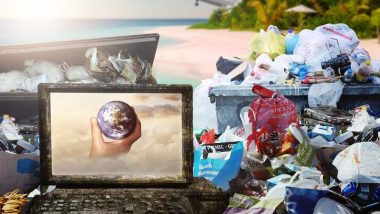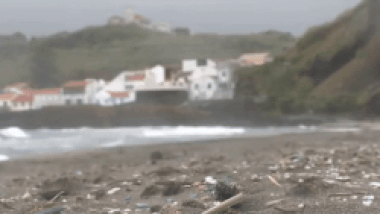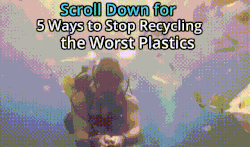
Want to avoid buying the bad plastic which can't be recycled? Read-on for five ways you can stop inappropriately recycling bad plastics which can't be recycled.
What if we all could “just separate out plastic bags and containers from our rubbish”, let the nice council people take it away and without having any negative impact on the environment?
Sounds good, doesn’t it? Of course!
But the plastic problem isn’t such an easy one to tackle, experts claim. Too bad!
However, we can make a dent and start to take some actions to recycle the worst of the plastics items we use day to day. Scroll down to find out 5 ways how…
Bad Plastic – The Worst Plastic Rubbish Which Won't Go Away for 400+ Years
Did you know every single plastic bottle produced by the soft drinks companies will remain on the planet for at least 450 years if not longer? Yes, it’s shocking but true! Plastic, unlike metal or glass, cannot be recycled infinitely. After just a few times getting recycled, it will be discarded as rubbish, where it will take some centuries to slowly degrade (not good for our environment at all). Or even worse – it gets dumped into the oceans or gets burnt thereby instantly polluting the environment in which not just we, but the whole ecosystem of organisms live!
So, what can we do about this serious situation? As a first step, we would need to stop recycling the worst kind of plastics. By the “worst plastics”, we mean the bad types of plastic that should not be sent for recycling. In this article, we share information about the worst kind of plastics and learn some of the best ways to stop the recycling of this type of waste.
But, first, let’s understand why should we even be concerned about this.
Why We Need to Stop Sending Unsuitable Plastics for Recycling
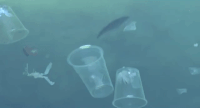
Carbon emissions emerge from every single stage in the whole plastic lifecycle – from the use of fossil fuels that are used to produce it, it's waste management and disposal. We already know that plastic has been threatening the global environment and putting human health at risk since more than a few decades now.
But when you send the wrong type of plastic material for recycling, it becomes another nightmare for recyclers to separate it from the recyclable waste. There’s even a possibility of having some kind of contamination spread in this process.
This is why it becomes important for you to confirm with your local authorities what kind of plastics they consider as recyclable vs non-recyclables (good vs bad plastics).
If you don’t want to deal with this issue, make regular rubbish clearance a priority. It’s easy to find companies that do rubbish removal in London. Let them do it for you. What could be better than this?
Addressing the Confusion and Myths Around Recyclable Plastic

Even though most people are trying their level best to recycle plastic, but each of the councils across the UK has different rules around it. They also employ different junk removal companies to collect and sort out the plastic waste for them.
In some areas, you can send empty margarine tubs for recycling and in other areas, you can’t. No wonder it has left many residents confused over what can actually be recycled and what can't. Too bad!
To understand this topic better and address all the confusion, here’s a list of plastics along with their recyclable status.
Non-Recyclable Plastics (The Baddies!)
1. PVC (Polyvinyl Chloride)
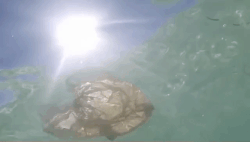
You can typically find this kind of plastic in:
- Blister packaging
- Cling film
- Table Protectors
- Hoses
- Plastic outdoor furniture
- Plastic pipes.
2. PS (Polystyrene)
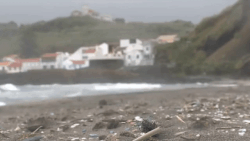
There are 2 types of polystyrene: one is hard, brittle plastic and the other one is expanded polystyrene (lightweight, insulating, water-proof plastic)
Here are some examples of items that have polystyrene:
- Disposable spoons and forks
- Some yoghurt pots
- CD Cases
Here are some examples of items that have expanded polystyrene:
- Styrofoam
- Insulation (some types)
- Foamy takeaway packaging
- Packing peanuts
- Meat trays
3. Other non-recyclable plastics
Other non-recyclable plastics include composites such as crisp wrappers, bioplastics, polycarbonate (which contains BPA) and plastic-coated wrapping paper.
Recyclable Plastics (Better for the Environment)
1. PET (Polyethylene Terephthalate)
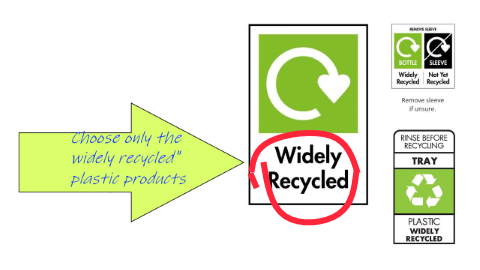
You probably already know this – PET plastic is one of the most widely accepted single-use recyclable plastics. This is the type they use for manufacturing single use clear plastic bottles.
Here are some examples:
- Plastic Bottles
- Mouthwash bottles
- Fizzy pop bottles
- PET can be easily recycled into filling for carpets, fleeces, and cushion fillings, apart from polyester fabric.
2.HDPE (High-Density Polyethylene)
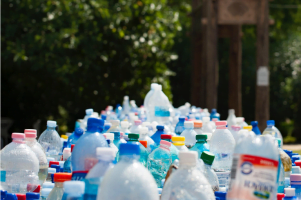 Even though HDPE is recyclable plastic, but it’s good to check with the Local Authority if they accept it for recycling in your area.
Even though HDPE is recyclable plastic, but it’s good to check with the Local Authority if they accept it for recycling in your area.
You will find this plastic in stiff coloured plastic bottles/tubs.
Here are some of the examples:
- Bleach/detergent bottles
- Milk Jugs
- Shampoo bottles
- Bottle caps
- Ice cream tubs
- Margarine tubs
3. LDPE (Low-Density Polyethylene)
This is hard but flexible plastic. Just like HDPE, LDPE can also be recycled. Again, you will need to check and confirm with your Local Authority if it’s recycled in your area.
Here are some examples:
- Squeezable bottles, like hand cream tubes
- Frozen food bags
- Bread bags
4. PP (Polypropylene)
Just like HDPE and PDPE, PP can be recycled but you will need to check with the Local Authorities to make sure it’s recycled in your area.
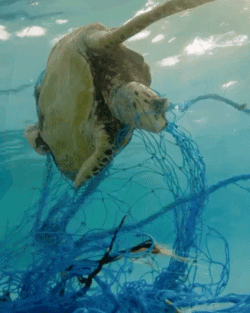
Here are some examples:
- Plastic Straws
- Packing tape
- Ketchup bottles
- Take away tubs
- Resin picnic-ware
In case you are not sure which plastic bag or container comes under which category, have a look at the labels placed on them. For example, here’s the label you will typically find on non-recyclable plastic:
If you are still not sure, why not let companies that are experts at junk removal rubbish clearance do it for you?
5 Ways to Stop Recycling the Worst Plastics
Let’s come to the most important section of the article – what you can do to help in this regard. Here are some tips to guide you in the right direction.
- Avoid using plastic products. Steer clear of it in bags, straws, bottles, and packaging – as far as possible.
- Don’t litter in public places.
- Recycle whatever you can.
- Upcycle bad plastics instead of trying to recycle them.
- Hire companies that are experts at rubbish removal in London.
Final Thoughts – How You and I Can Avoid Contributing to the Bad Plastics Problem
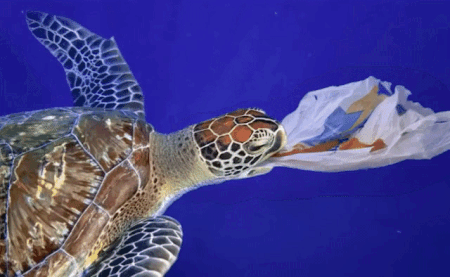
It’s quite apparent that we need to change the way we think of the plastic waste. It’s not just about recycling, but also avoiding its use as far as possible.
That’s what we need to do if we truly want to mitigate the devastating impact of plastic on our environment.
As a result, governments will be able to stop the production of plastics entirely in the times to come.
All it takes to achieve this feat is a decision to put the future of the human race way above a tiny bit of convenience. We need to acknowledge the huge scale of this plastic mess we have got ourselves in if we really want to see an environmental change – and we need to do so before it’s too late.
Attribution: All images except for the top image of a diver swimming in plastic pollution, are from the Creative Commons ISPRAVIDEO Indicit “Marine litter impact on sea turtles” Video on YouTube produced for the EU. The top most image is also based a clip from a YouTube video. In this instance, the video is titled “Diver Films Shocking Sight Caught on Tape” by CR 2.0.



